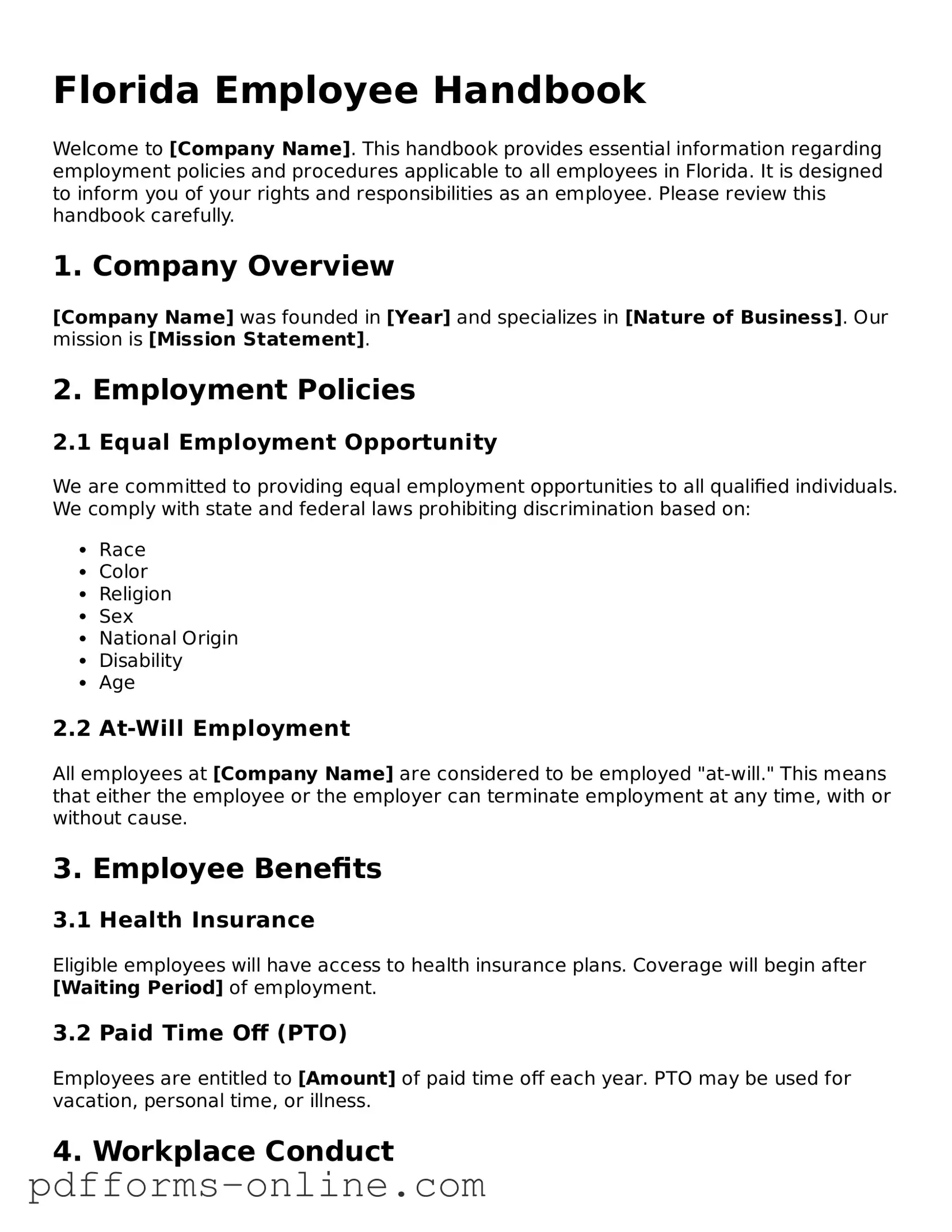Florida Employee Handbook
Welcome to [Company Name]. This handbook provides essential information regarding employment policies and procedures applicable to all employees in Florida. It is designed to inform you of your rights and responsibilities as an employee. Please review this handbook carefully.
1. Company Overview
[Company Name] was founded in [Year] and specializes in [Nature of Business]. Our mission is [Mission Statement].
2. Employment Policies
2.1 Equal Employment Opportunity
We are committed to providing equal employment opportunities to all qualified individuals. We comply with state and federal laws prohibiting discrimination based on:
- Race
- Color
- Religion
- Sex
- National Origin
- Disability
- Age
2.2 At-Will Employment
All employees at [Company Name] are considered to be employed "at-will." This means that either the employee or the employer can terminate employment at any time, with or without cause.
3. Employee Benefits
3.1 Health Insurance
Eligible employees will have access to health insurance plans. Coverage will begin after [Waiting Period] of employment.
3.2 Paid Time Off (PTO)
Employees are entitled to [Amount] of paid time off each year. PTO may be used for vacation, personal time, or illness.
4. Workplace Conduct
4.1 Code of Conduct
All employees are expected to adhere to standards of conduct that promote a professional work environment. These standards include:
- Respect for colleagues and clients.
- Honesty and integrity in all dealings.
- Adherence to company policies and procedures.
4.2 Harassment Policy
Harassment of any kind is strictly prohibited. Employees have the right to work in an environment free from harassment and intimidation.
5. Acknowledgment
By signing below, you acknowledge that you have read and understood the policies set forth in this employee handbook.
Employee Name: [Employee Name]
Employee Signature: [Signature]
Date: [Date]
